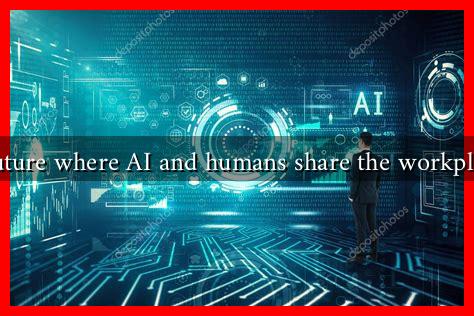-
Table of Contents
Is There a Future Where AI and Humans Share the Workplace Equally?
The rapid advancement of artificial intelligence (AI) has sparked a significant debate about the future of work. As AI technologies become increasingly sophisticated, the question arises: can humans and AI coexist in the workplace on equal footing? This article explores the potential for a collaborative future, examining the benefits, challenges, and real-world examples of AI integration in various industries.
The Rise of AI in the Workplace
AI has made remarkable strides in recent years, transforming industries from healthcare to finance. According to a report by McKinsey, AI could contribute an additional $13 trillion to the global economy by 2030. This growth is driven by AI’s ability to automate routine tasks, analyze vast amounts of data, and enhance decision-making processes.
Benefits of AI-Human Collaboration
As AI continues to evolve, the potential for collaboration between humans and machines becomes increasingly apparent. Here are some key benefits of this partnership:
- Increased Efficiency: AI can handle repetitive tasks, allowing human workers to focus on more complex and creative aspects of their jobs.
- Enhanced Decision-Making: AI systems can analyze data at unprecedented speeds, providing insights that help humans make informed decisions.
- Improved Job Satisfaction: By offloading mundane tasks to AI, employees may experience greater job satisfaction and engagement.
- Innovation: The collaboration between AI and humans can lead to innovative solutions and new business models.
Challenges to Equal Workplace Integration
Despite the potential benefits, several challenges must be addressed to achieve a future where AI and humans share the workplace equally:
- Job Displacement: One of the most significant concerns is the potential for AI to displace jobs. A report from the World Economic Forum estimates that 85 million jobs may be displaced by 2025 due to automation.
- Skill Gaps: As AI takes over routine tasks, there will be a growing demand for workers with advanced skills in technology and data analysis. This shift may leave many workers behind.
- Ethical Considerations: The integration of AI raises ethical questions about bias, privacy, and accountability. Ensuring that AI systems are fair and transparent is crucial for fostering trust in the workplace.
Real-World Examples of AI-Human Collaboration
Several companies are already embracing AI-human collaboration, showcasing the potential for a balanced workplace:
- IBM Watson: In healthcare, IBM Watson assists doctors by analyzing patient data and providing treatment recommendations, allowing healthcare professionals to make more informed decisions.
- Amazon: Amazon uses AI to optimize its supply chain and improve customer service. Human workers focus on tasks that require empathy and creativity, such as customer interactions.
- Siemens: Siemens has implemented AI in manufacturing to enhance productivity while allowing human workers to oversee complex processes and ensure quality control.
The Path Forward: Education and Adaptation
To create a future where AI and humans share the workplace equally, a concerted effort is needed in education and workforce development. Here are some strategies to consider:
- Reskilling Programs: Companies should invest in reskilling programs to help employees adapt to new technologies and acquire the skills needed for the future job market.
- Collaboration with Educational Institutions: Partnerships between businesses and educational institutions can ensure that curricula align with industry needs, preparing students for AI-enhanced roles.
- Promoting Lifelong Learning: Encouraging a culture of lifelong learning will help workers stay relevant in an ever-evolving job landscape.
Conclusion
The future of work is poised for transformation as AI continues to advance. While challenges such as job displacement and skill gaps must be addressed, the potential for a collaborative workplace where humans and AI coexist is promising. By investing in education, reskilling, and ethical AI practices, we can pave the way for a future where both humans and machines contribute equally to the workforce. Embracing this change will not only enhance productivity but also foster innovation and job satisfaction, ultimately leading to a more prosperous society.
For further reading on the impact of AI on the workforce, visit World Economic Forum’s Future of Jobs Report.


